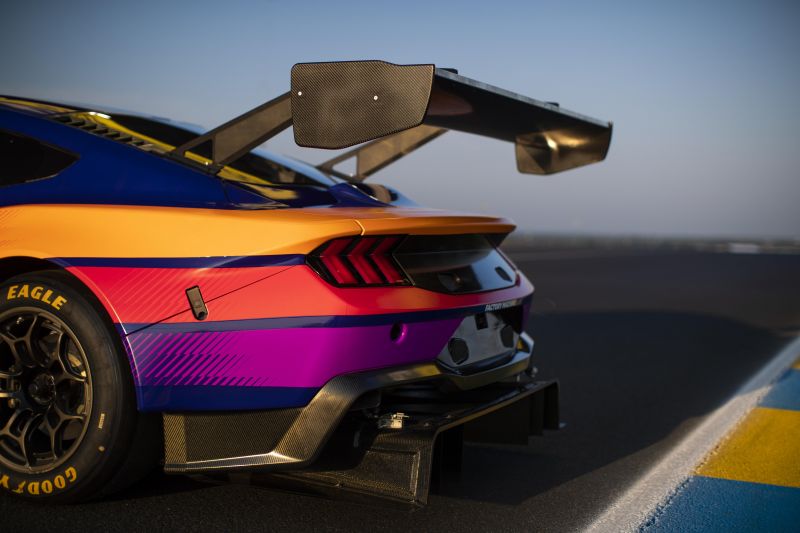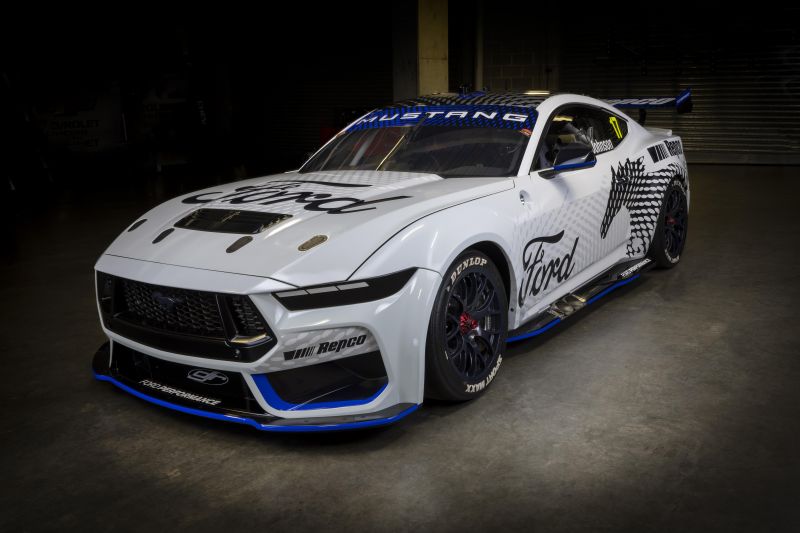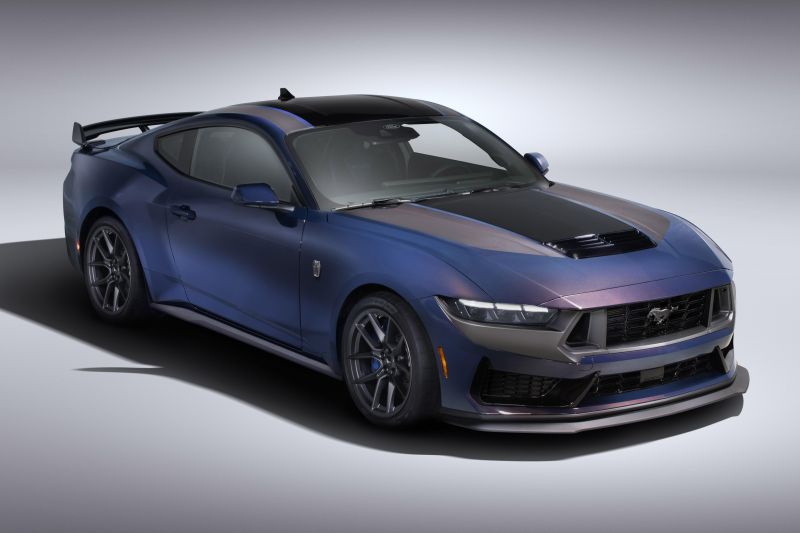A surprising new motorsport hero could help save the petrol-powered Ford Mustang from extinction.
The latest racing version of the Mustang, called the GT3, is being readied to race across the globe in a program that will be focussed on the Le Mans 24-Hour race in 2024.
The Mustang GT3 will also compete in Australia from 2025, in a program totally separate from the Blue Oval brand’s involvement in Supercars racing.
The key to the GT3 program is that, instead of costing Ford money from its marketing budget, it will become a profit centre.
Hundreds of Mustang GT3 racers will be built over the life of the model, all of them sold to private teams, and the halo effect could be similar to the racing connection that has kept the Porsche 911 alive and thriving.
Porsche is one of the most successful brands in GT3 racing, but the road-based racers also include cars from Audi, BMW, Ferrari, Honda, Mercedes-Benz, Lamborghini and McLaren.
“This really does take Mustang global. It’s telling the world our commitment, as we’re pursuing all these cool electric vehicles which are important for us as a company and for the world, there’s still also a place for internal combustion engines and sports coupes,” the global head of Ford Performance, Mark Rushbrook, told CarExpert.
“Having the seventh-generation Mustang in racing gives us a nice long runway on the road car. It gives us that same long runway with race cars as well.
“GT3 (racing) is a global category. It’s in Europe and South-East Asia and the ’states.”
Mr Rushbrook draws a direct connection between racing the Mustang and keeping the model alive, even as the Mustang Mach-E begins the push for a range of battery-electric models that could be sold under the Mustang sub-brand.
“It is important, as we offer a full ladder of Mustang road cars, to offer the same full ladder of Mustang race cars,” he said.
“And to have that opportunity to tell the story of road coupes that race.
“So people will still have Mustangs on the road and they’ll be able to go to the racetrack and see them race, or race themselves. There’s a lot of people that want to do that.”
The first Ford Mustang to compete with the seventh-generation bodywork, coming to Australian showrooms soon, was the Supercars racer that now goes head-to-head with the competition version of the Chevrolet Camaro.
But those are custom-built race cars with silhouette bodywork to mirror the Ford and Chevrolet road cars.
The Mustang GT3 has a much more radical look, but is built from the basics of the road car with its Coyote V8 engine.
The same will be true of the Mustang GT4 – which will have fewer modifications – that will follow the GT3 racer.
“The race car starts as a body-in-white like the production car. There are obviously modifications … in order to get the exact structure and optimised suspension,” he said.
Mr Rushbrook said the Mustang GT3 is far more radical than the Supercars contender, and describes it as the most-advanced Mustang yet.
“Absolutely. By a factor. I’m just looking at it, compared to a Supercar, and it’s from a different planet,” he said.
Mr Rushbrook cannot get into the financial details of the Mustang GT3, either the price or the number of cars that will be built in a partnership with British companies Multimatic (bodies) or M-Sport (engines), but he is bullish about the program.
“We have a lot of interest. There are people in Australia. And also for the Mustang GT4,” he said.
“There’s a lot of interest around the world for these cars. When we first said we were going to do this, which was January of 2022 – and also with the Dark Horse (model) thrown in – there is a lot of interest.”
MORE: Everything Ford Mustang




